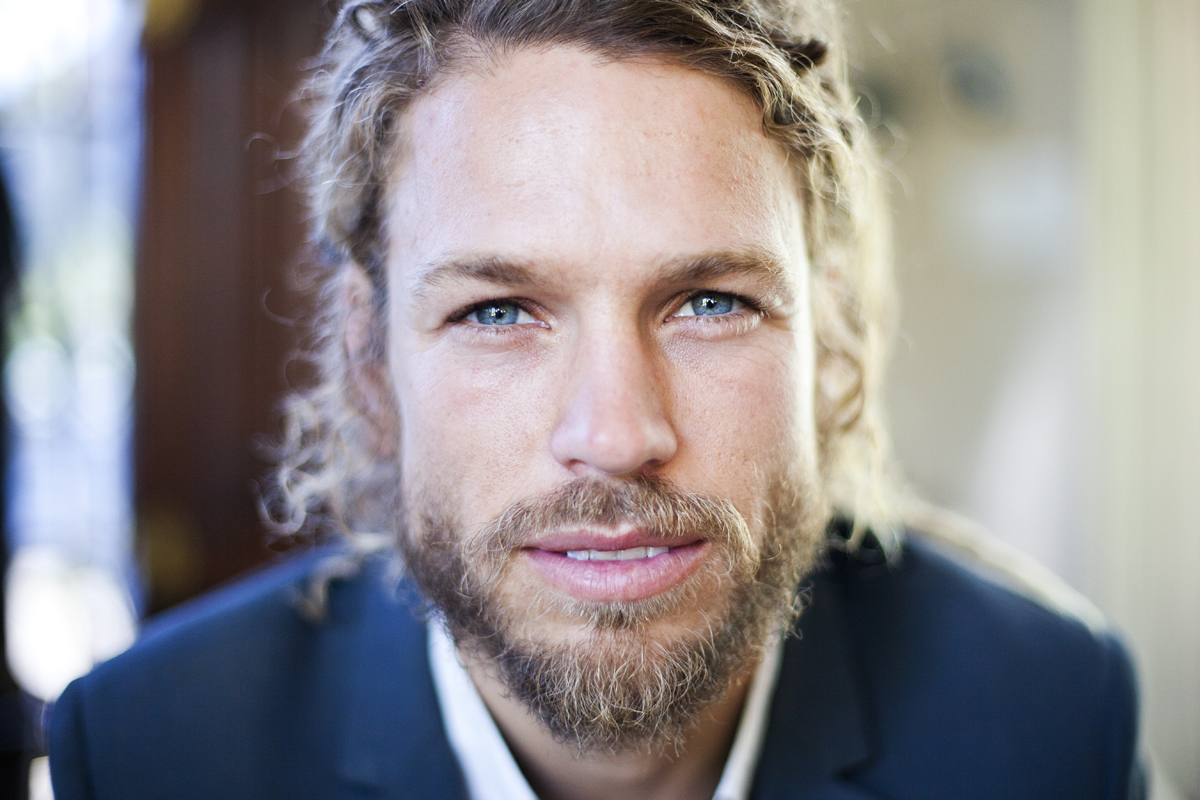Smartphone Portrait : Smart move?
In the past month I have come across too many people admitting their profile portraits on their website were shot with a smartphone. Also there was no shame or guilty look in their eyes!
Can you take a good portrait using a smartphone?
Personally I don't think this is possible, and as this is my subjective view, I will have to explain myself using what I believe to be a good portrait as a framework. A good portrait should make the subject look good and make the viewer want to engage.
How do you make someone look good? They already look great you just have to harvest that light correctly to represent them in the best way possible, and this is where the technical bits come in.
Technicalities - The Lens
The focal length of the camera in your smartphone ranges from 25mm to 31mm, this depends on the length of the lens and the size of the sensor. This is a prime lens so when you zoom in it actually just magnifies and crops this image and won't change the focal length, loosing quality in the process. This focal length is equivalent to a wide-angle lens when you compare it to a DSLR camera. These lenses are used to allow more of the environment to be captured within one image. Think of standing in a small room and being able to get more of your peripheral view into the picture. It bends the light to be able to do this and in turn will distort objects, making an object closer to the lens appear larger than usual. Now take this into consideration when taking a close up portrait of someone, that normal nose will become larger than life… Using a 70mm-100mm is considered ideal for portraiture, as this will get rid of lens distortion, creating a more flattering image and allow a bit of space between you and your subject, which would be less intimidating.
Depth-of-Field and Selective Focus
Canon 5d mkii, 50mm @f1.4
A longer lens in collaboration with the right aperture will also allow selective focus. Depth of field refers to the depth of an image that will be in focus. Wide lenses have a greater depth of field, allowing everything to be in focus while a longer lens will have a selective focus. So, when taking a portrait of someone where the subject is in focus and the background is blurry, the attention will stay on the subject. Or when doing close up's you can concentrate on the eyes for an engaging, intimate effect.
Proof in comparison
In the comparison you can easily see the distortion and the difference in depth, but now you can argue "He's not smiling!". With the iPhone I had to get very close to get the right crop while I was at a comfortable distance with the DSLR. 'Invading' the sitter space will effect the way the subject will react to the photographer. Niall was much more confortable when I took a step back. There is also a shift in confidence that I've noticed on many occasions when you pull out the 'big guns'.
iPhone5, default lense, automatic
Canon 5d mark ii, 70mm f4 @ 1/400
iPhone 4
What about the iPhone7 Portrait Mode?
Now the iPhone 7 with its portrait function is trying to replicate this effect. It uses a dual-camera system to create a faux depth of field effect with a Gaussian blur to simulate this effect. It houses a 28mm as well as a 56mm equivalent lens. This gets close to simulating the depth you can achieve with a wide lens so could work well with environmental portraits but not headshots and will not come close to what you can achieve with a proper portrait lens.
Capturing the light
Lastly from a technical point of view, I just want to touch on light. Smartphones have proven themselves very capable of capturing natural light, so when studio is not involved, the smartphone can be seen as an equal. Here the photographer has to take responsibility of understanding light and how it effects it's subject. Top lit will create shadows under the eyes, incandescent lighting will give a yellow hue while under lit situations will create dark eyes and unflattering skin.
The Connection
Getting to the second part of the framework, we can strip the photographer from all it's fancy camera's lights and equipment because in the end we're sitting with two people, a sitter and a photographer, an interaction and in the end a collaboration. Phillip Prodger, Head of Photographs at the National Portrait Gallery said it so well:
"In the best portraits a spark flies from sitter to maker to viewer, a synapse firing between us. We can try to describe it, but its real effects are subcutaneous."
By Phillip Prodger
What is a good Portrait?
A portrait are not a mere likeness to the sitter, if that was the case everyone with a good lens or smartphone could be a great portraitist. As Phillip mentioned there is a connection between the sitter and the photographer that gets captured and carried to the viewer. What a good portrait is, will differ from person to person, some people wants vulnerability to be able to connect, some needs mystery to engage, some will need power to be challenged. To me these are all true, the most important thing is that the viewer want to engage with the sitter, to get to know or to understand.
What is a portrait but a visual representation of who you are and what you stand for. When someone is looking at a picture of you, there is no background dialog that explains your view, morals, passions or fears. Even a great portrait will not be able to communicate all of this, but a portrait should be able to spark an interest of wanting more: "I want to get to know this person" or " I want to work with this person" You can probably take an okay picture with your cell phone but then are we really striving for mediocrity?







